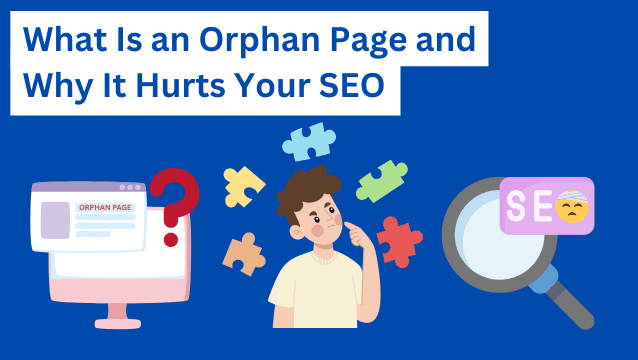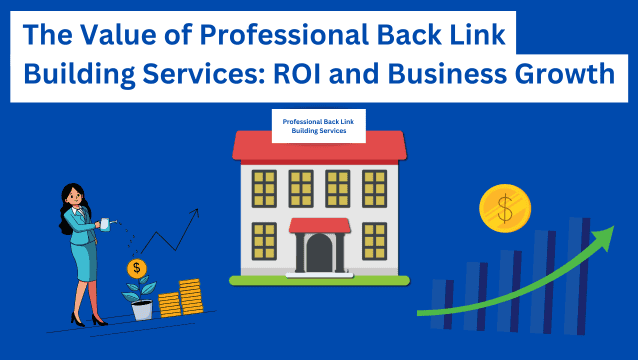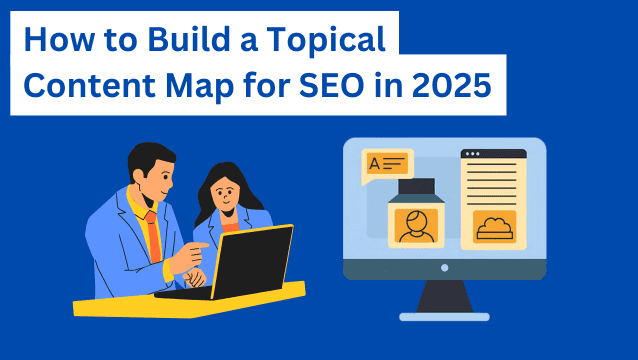Search engine optimization (SEO) has transformed a lot over the years.
What worked a decade ago — or even a few years ago — doesn’t guarantee success anymore. So, what does SEO mean in 2025?
In 2025, SEO focuses on user intent, optimizing for AI, and delivering real value to your audience. You need user-focused strategies that align with what searchers want and expect.
If you want to future-proof your SEO strategy, keep reading! We’re breaking down the dos, don’ts, and what SEO looks like this year so you can get ready to conquer the search engine results pages (SERPs).
Redefining SEO meaning in 2025
SEO in 2025 is about creating high-value, user-focused content that matches search intent and keeps visitors (happily) on your site.
When you ask what SEO means for your website, consider that Google Search prioritizes user experience (UX) signals. These include page speed, mobile optimization, and bounce rate. It also pays attention to authority and content relevance.
To compete and reach your SEO goals, you’ll need:
- Linkable content assets (content that’s designed to naturally attract backlinks due to its value and relevance)
- Clear answers to common search queries to increase the chances of appearing in featured snippets
- High-quality and relevant content that’s authoritative and engaging to hook your audience
- Strategic keywords supported by user data and AI insights to stay ahead of trends.
- A quick, helpful, and highly engaging website to keep users on the page longer.
- Visual content for audience engagement and to give even more value
If you need help with this, don’t hesitate to reach out.
We’ll design a custom SEO strategy for your business, help you build quality backlinks — and even write valuable content for you.
Outdated SEO tactics you must stop
Like we touched on before, some strategies that once worked can now harm your search engine marketing efforts.
Here are three major mistakes to avoid in 2025:
1. Stop keyword stuffing
Keyword stuffing used to be a shortcut to organic ranking. But now, it gets penalized. Overloading a page with keywords creates a poor user experience — which leads to higher bounce rates and lower search engine rankings. (Aka SEO sabotage😣)
For example, a travel blog stuffing “cheap tickets” repeatedly could face sharp traffic drops from Google penalties.
2. Stop ignoring UX signals
Metrics like bounce rate, time on page, and click-through rate (CTR) are critical in 2025.
These signals show how well your content satisfies search intent. If users leave quickly, search engines assume your content doesn’t meet their needs. Or your site’s too slow.
Google’s focus on user satisfaction means every second counts. Sites with poor navigation, slow load times, or unresponsive designs lose out.
3. Stop chasing random backlinks
The number of inbound links you have matters less than their quality. Irrelevant or random backlinks can actually hurt your domain authority.
Instead, focus on creating relevant, high-quality content and building meaningful connections with authoritative website owners.
For example, a B2B SaaS company can improve search rankings by partnering with industry blogs for thoughtful, context-rich backlinks. With linkable assets and quality guest posts, the brand encourages more relevant do-follow links to strengthen its backlink profile.
Here’s a linkable asset we created at uSERP to showcase what we mean:
→ Your overall SEO goal is to build a strong brand online. High domain authority (that you get from having solid backlinks) is the top way to do that.
What’s working in 2025
Focusing on what really resonates with your audience is key in 2025.
Here’s what’s working this year.
AI-first indexing
Search engine crawlers are more advanced and are using AI to deeply analyze content.
Content must be structured and organized clearly for it to rank well. Take recipe websites, for example. (Those with clear instructions, schema markup, and well-organized sections tend to rank higher because AI can easily understand and categorize their content.)
→ Actionable tip: If you’re running a blog, make sure your content is well-structured. Use headings, subheadings, and bulleted lists. Schema markup also gives search engines context about your content.
Content clusters and semantic search
SEO now revolves around grouping related content together into topic clusters. These clusters demonstrate your authority in a particular field and help search engines connect the dots.
For instance, if you run a project management blog, you could group content like “project planning tips,” “time management strategies,” and “team collaboration tools” into one content cluster. This interlinking is great for SEO and makes it easier for your audience to find related content on your site.
→ Actionable tip: Identify core topics in your niche and create clusters around them with internal links. Make sure each piece of content links to the others in a way that provides value to both the reader and search engines.
Schema markup
When you add schema markup to your pages, search engines can understand what your content is about more effectively. It’s especially useful for e-commerce sites or any business looking to earn featured snippets.
(Rich results — like product ratings or FAQ snippets — can increase click-through rates and visibility.)
→ Actionable tip: Add product, review, and FAQ schema to your pages. Doing so can increase your chances of appearing in rich snippets and drive more organic search traffic to your site.
Common SEO mistakes to avoid
You can still make mistakes that could harm your SEO efforts. Even if you use the best tools.
Avoid these common pitfalls in 2025.
1. Over-reliance on AI-generated content
AI is a fantastic tool, but relying solely on it for content creation can backfire. (Thin, generic AI content lacks the personality and depth users crave.) Plus, search engines are getting better at identifying low-quality AI content, which can hurt your rankings.
Use AI for research and analysis. But always add your personal touch when crafting content.
Create content that speaks directly to your audience’s needs and interests. Make it rich with insights, examples, and value that AI alone can’t provide.
2. Ignoring UX signals
Google’s algorithms increasingly prioritize user experience (UX).
If your site has a high bounce rate or long load times, you’ll see a drop in rankings. Core Web Vitals — metrics like load time and visual stability — are essential for maintaining good UX.
Check your site’s Core Web Vitals and address any issues. Use Google’s PageSpeed Insights to identify slow-loading pages. (And make the suggested improvements!)
3. Neglecting E-E-A-T (Experience, Expertise, Authoritativeness, Trustworthiness)
E-E-A-T is more critical than ever.
It may not be a core ranking factor. But, if your site lacks credibility and authority, it won’t rank well. Google values content from trusted experts who can prove their authority in a field.
Be sure to:
- Focus on trust-building by making sure your site is secure and your contact information’s easy to find.
- Consistently produce valuable content that shows your expertise
- Build a quality backlink profile (more on this in a bit)
- Highlight author bios with credentials
- Link to authoritative sources
Building backlinks in 2025: Quality over quantity
Backlinks matter — but the focus shouldn’t be on getting as many as possible. Quality backlinks from trusted sources have far more weight than a bunch of low-quality links. In fact, in one study, Semrush found that backlinks can increase your chances of having better search rankings on search engines than domains without any backlinks.
Here’s how to build them effectively in 2025.
Focus on relevant, high-authority backlinks
Instead of chasing backlinks from random websites, aim for links from authoritative sites in your industry. Search engines see this as a sign that your content is trustworthy and provides value to your target audience.
For example, if your SaaS company focuses on cybersecurity, you could improve rankings on search engines by earning backlinks from:
- Reputable tech blogs that don’t compete with you
- Government cybersecurity sites
- Cybersecurity industry blogs
Look for industry-related blogs, like tech blogs, where you can contribute as a guest post writer. Find influencers within your niche as they can help promote your services on their social media sites. Make sure the links you earn are contextually relevant and contribute to the quality of the content.
*Pro-Tip: Head to Google and search “[YOUR NICHE HERE] + Guest Posting Guidelines” to find sites that accept guest posts.
Here’s an example of a guest-authored post:
The role of AI in modern SEO
AI is changing the way we approach and work in SEO. It’s making processes faster, more precise, and more personalized. In fact, understanding the SEO meaning behind these advancements can help you leverage AI effectively. Many businesses are now turning to AI SEO services to harness these advanced capabilities and stay competitive in the evolving search landscape.
→ It can automate repetitive tasks, analyze huge amounts of data, and give insights that would be hard to spot otherwise. But it’s so important to use AI as a tool to support your strategy.
Not as a replacement for human creativity and expertise.
How to use AI in SEO
Use AI to gather valuable data and insights. Don’t just rely on this. Your audience values fresh ideas and content that speaks to their specific needs. So, make sure to add your own unique touch.
(Which is something only you can provide.)
AI as a research and optimization tool
AI is incredibly useful for tasks like keyword research, competitor analysis, and content optimization. With tools like SEMrush and Ahrefs, AI helps you find trending keywords, identify keyword search volumes, understand search intent, and track your rankings, all in one place.
With this insights, you can fine-tune your strategy to stay ahead of the curve.
The rise of zero-click searches
Zero-click searches — where the answer appears directly on the SERP without users needing to click through — are growing.
These include featured snippets, knowledge panels, and instant answers. For example, when you search for a quick recipe, you often see the steps at the very top of the SERP.
To optimize for zero-click searches:
- Structure content in a Q&A format: Use headers in your content that start with “Who,” “What,” “Why,” and “How.” This organizes your information for easy extraction.
- Answer common questions clearly and concisely: Make your content direct and easy to read. This helps search engines identify and pull the most relevant answers.
- Provide a dedicated FAQs section: Add an FAQ section at the end of blog posts. (This is a clear and accessible resource for users and search engines alike!)
- Use structured data: Implement FAQ schema to help search engines pull your content directly into snippets.
Practical steps to future-proof your SEO
To stay ahead in 2025, you need strategies that focus on the future of SEO and user-centric tactics. Understanding the SEO meaning behind these is essential for building a strong online presence.
Here’s what you can do:
1. Solve user problems
Search engines are focused on delivering value to users — so should you. Your content should answer real questions and solve specific problems.
Stop thinking about gaming the system. Focus on being genuinely helpful to your audience.
Put yourself in your target audience’s shoes:
- What problems are they trying to solve?
- What questions do they have?
Build content that provides in-depth, actionable solutions.
It’s also important to target keywords that your users are searching for on mobile and voice-activated devices. These typically include location-based keywords or long-tail keywords that are more conversational. (For example, “Laptop repair store in Phoenix,” or “How to plan a construction project timeline.”)
Screenshot provided by the author
2. Build trust through E-E-A-T
E-E-A-T is key to gaining visibility. Search engines want to promote content that’s trustworthy, authoritative, and created by experts. If you want your site to succeed, you need to demonstrate these qualities consistently.
Publish high-quality content regularly, build strong relationships with influencers, and earn backlinks from trusted sources to improve your credibility.
3. Stay updated with SEO trends and tools
The SEO industry is constantly changing.
Keep an eye on the latest updates from search engines and adapt your strategy accordingly. With tools like Google Search Console, SEMrush, and Moz you can track your SEO performance and identify new opportunities.
You can also:
- Participate in forums or groups where SEO experts discuss the latest trends
- Subscribe to SEO news and newsletters
- Attend SEO webinars
To implement the advice we’ve shared in this guide, use our future-proof SEO checklist in the next section. ✅
SEO 2025 Checklist: Future-Proof Your Strategy
Use this checklist to stay ahead of the curve and position your site for success in 2025:
- Focus on user intent
- Create valuable content that answers your audience’s pain points.
- Use SEO tools like Google Search Console to track user behavior and adjust content accordingly.
- Create standard processes that encourage high content quality every time.
- Generate quality backlinks
- Aim for high-authority, relevant backlinks from trusted industry sources.
- Consider guest posting, partnerships, and collaborations with influencers and affiliates.
- Create linkable assets, like infographics, guides, and industry reports.
- Optimize for AI-first indexing
- Structure your content with headings, subheadings, and bullet points.
- Use schema markup so that search engines can understand and categorize your content easily.
- Prioritize a positive user experience (UX)
- Check your Core Web Vitals using Google’s PageSpeed Insights.
- Improve page load times, mobile responsiveness, and reduce bounce rates.
- Build content clusters
- Group related content into clusters to demonstrate authority.
- Make sure each piece links to others within the cluster to create a cohesive experience for both users and search engines.
- Implement schema markup
- Add structured data like product reviews, FAQs, and article schema to your pages.
- Aim for rich snippets and other enhanced results to improve online visibility.
- Move beyond keyword stuffing
- Avoid overusing keywords.
- Focus on natural, user-friendly content that meets search intent.
- Incorporate long-tail keywords to capture specific queries.
- Optimize for zero-click searches
- Format your content in Q&A style and use structured data (e.g., FAQ schema).
- Answer common search queries clearly and concisely to increase the chances of appearing in featured snippets.
- Build trust with E-E-A-T
- Showcase your expertise with well-researched, in-depth content.
- Link to credible sources and include author bios with credentials.
- Stay updated with SEO trends
- Follow SEO blogs, attend webinars, and stay informed about search engine algorithm updates.
- Regularly audit your site’s performance and adapt to new SEO trends and tools.
Wrap up
To sum up on what SEO really means…
Getting results with SEO techniques requires a deep understanding of user intent, building trust, and delivering real value.
Focus on creating a meaningful experience that satisfies users and aligns with their needs. Prioritize smarter, more thoughtful strategies that focus on VALUE and AUTHORITY and you’ll be just fine.
Need more guidance?
Dive deeper with our free course, “The Future of SEO.” Or Book a strategy call to take your content marketing strategy to a whole new level. (If high ROI is your goal, we’re your team.)
To your success!


